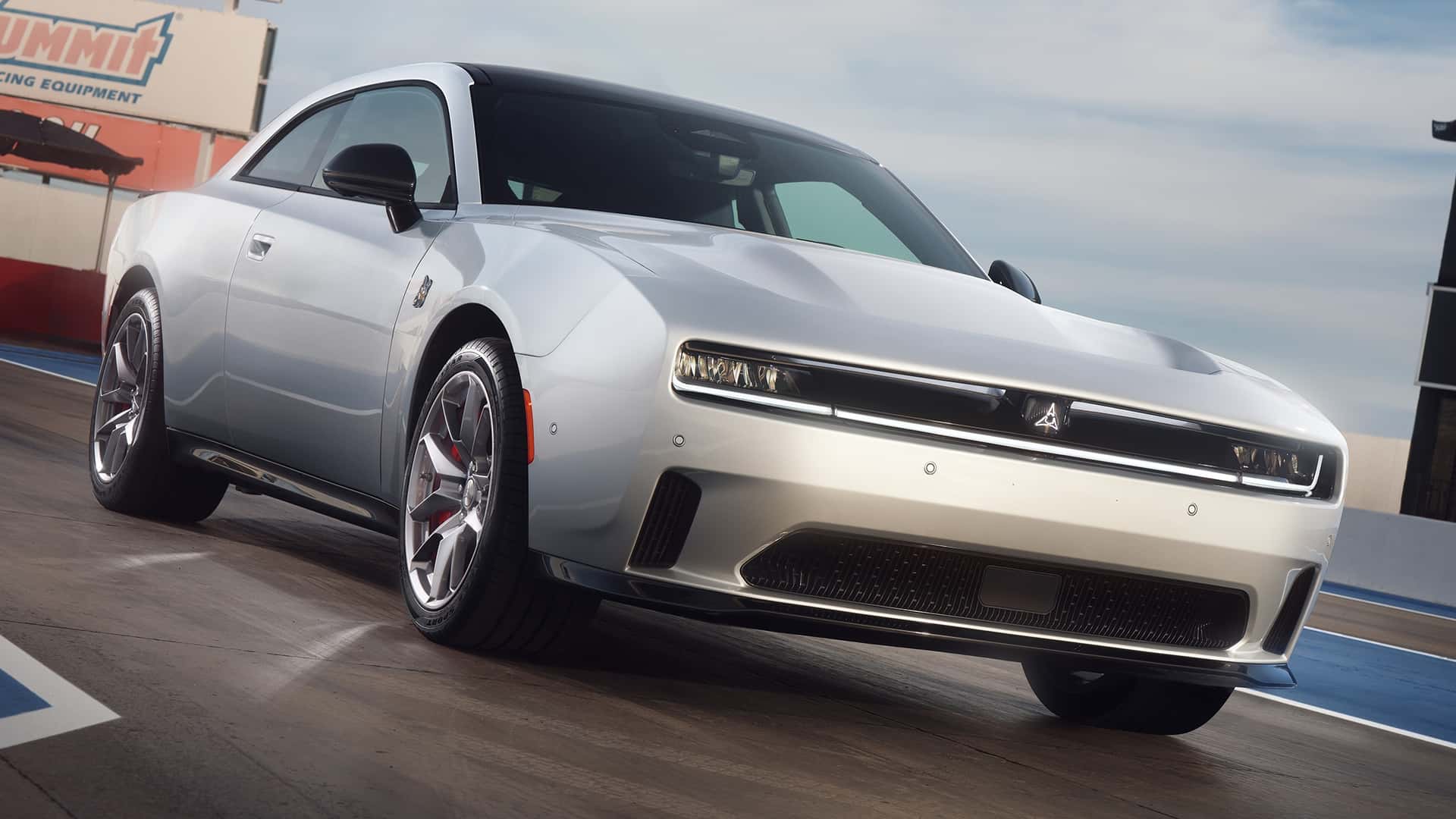
DODGE CEO: THE CHARGER DAYTONA EV IS A 'BETTER, FASTER' MUSCLE CAR
The brand's new boss wants to continue pushing SRT as its halo product.
Stroll through your local Dodge dealer, and you'll likely notice a few remaining Chargers and Challengers left on the lot. Production might have ended for the duo last December, but the glut of remaining stock isn't an accident. The automaker worked with its dealers to ensure they still had product available as it prepared to launch the next-generation Charger.
The brand plans to have fewer than 2,000 Charger and Challengers on lots when the 2024 Charger Daytona EV begins to arrive later this year, according to Dodge brand's new CEO, Matt McAlear, who spoke with Motor1 earlier this month, but it'll continue to have a limited lineup for the foreseeable future.
Dodge will begin building the coupe versions of the new electric Charger Daytona R/T and Scat Pack models sometime this summer, a decision he said was made long before he took over as boss on June 1. A few years ago, automakers went all-in on their electric vehicle plans, laying out ambitious timelines to convert their lineups to battery power, including Stellantis.
"We're putting our best foot forward," McAlear told us. "As excited as I am that this is an EV, we're not going to market this as the new EV." He said Dodge didn't set out to make a car with the best drag coefficient or the best range. "We went out to design the best muscle car."
The Charger Daytona Scat Pack with the standard Stage 2 package will launch with 670 peak horsepower, 627 pound-feet of torque, all-wheel drive, and a $75,185 starting price. The quickest version will reach 60 miles per hour in 3.3 seconds and complete the quarter-mile in 11.5 seconds. Dodge has already teased that there will be an even more powerful Banshee variant, but are hardcore SRT fans really ready to convert from gas to electrons?
"Some are. Some aren't," McAlear admitted, adding that customers don't become EV converts overnight.
However, he said he's encouraged by the fact that Dodge has "the youngest demographic in the mainstream industry, and they have the highest propensity to adopt electric," which may be true, but the brand has spent two decades cultivating a following that's only been fed increasingly high-powered V-8 Hemi engines. This steady V-8 diet has set certain expectations for Dodge's customers, one that kilowatts and electric motors might not be able to satisfy.
The STLA Large platform underpinning the new Charger is profitable with the electric powertrains and flexible enough to meet consumer demand. While Dodge is launching the electric two-door first, followed by four-door Daytona production early next year, it will also have a combustion-powered version called the Charger Sixpack.
It will sit below the all-electric cars while riding on the same platform. It'll have some styling differences and feature the twin-turbocharged 3.0-liter Hurricane straight-six already offered in Jeep and Ram, making 420 or 550 hp in SO and HO variants. The Sixpack will be the cheaper entry point into the new Charger lineup, but combustion-loving Dodge buyers will have to wait to buy one.
Production will begin in the second half of 2025, leaving the Charger Daytona to fend for itself as a premium offering in Dodge's thinning lineup until next year. The Charger Daytona R/T is cheaper, at $61,950 to start, nearly $30,000 more than the outgoing, V-6-powered Chargers and Challengers.
The 2024 Hornet starts at $32,995, and the Durango is $42,265, which gives McAlear plenty of room for the "mainstream performance" products he feels a future Dodge lineup has to support. He also wants to continue to push SRT as the brand's halo. Bringing products to market without an SRT or ultra-performance element "does not constitute where we want to continue to grow as America's performance brand," he said.
"It needs to be the right nameplates that are done in the Dodge manner that stand out in the sea of sameness," McAlear said, unable to provide any hints about upcoming products. This is a big task when horsepower is cheap with battery-electric powertrains.
Dodge hopes features like its Fratzonic Chambered Exhaust can help differentiate the electric Charger from other BEVs, but we'll have to wait to see how consumers react once it's on sale. There has been vocal online criticism of Dodge's shift to electric powertrains, and overall consumer sentiment toward EVs is beginning to wane, especially in America.
The Charger Daytona EV is a "new, better, faster" muscle car, according to McAlear, but Dodge will have to work to convince its fans to follow it into a new era. It could alienate the fanbase it worked so hard to grow, and the debates about Dodge's direction will continue until the new Charger hits the road and customers can experience it for themselves.
"If there wasn't debate, if there wasn't consternation, I think I'd be more worried," McAlear said.
Learn More About Dodge's New Muscle Car:
2024-08-27T14:29:12Z dg43tfdfdgfd